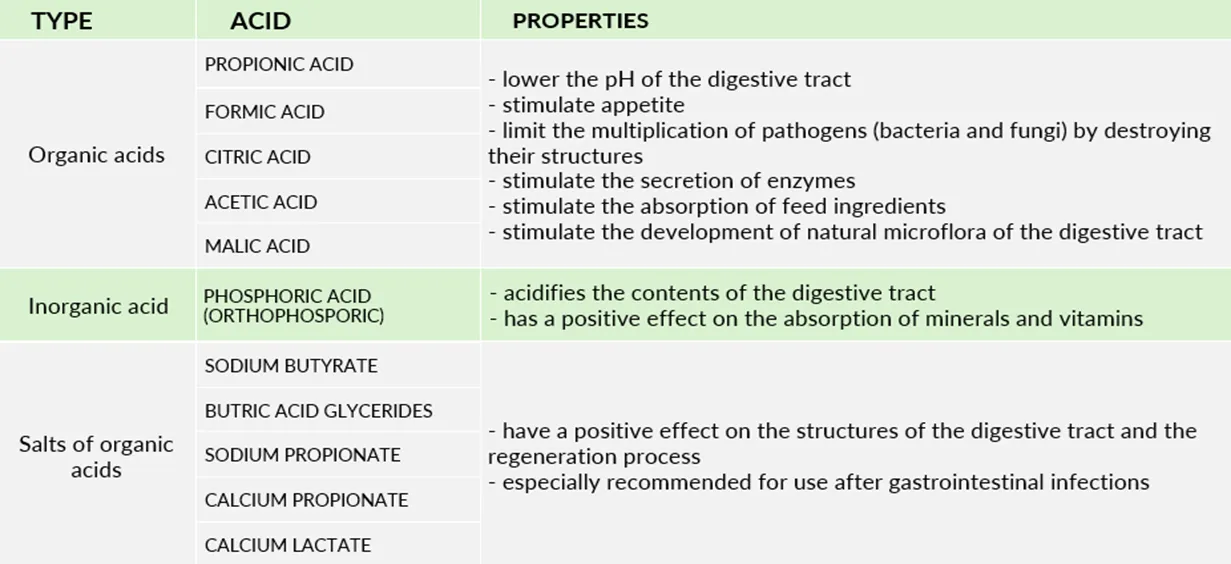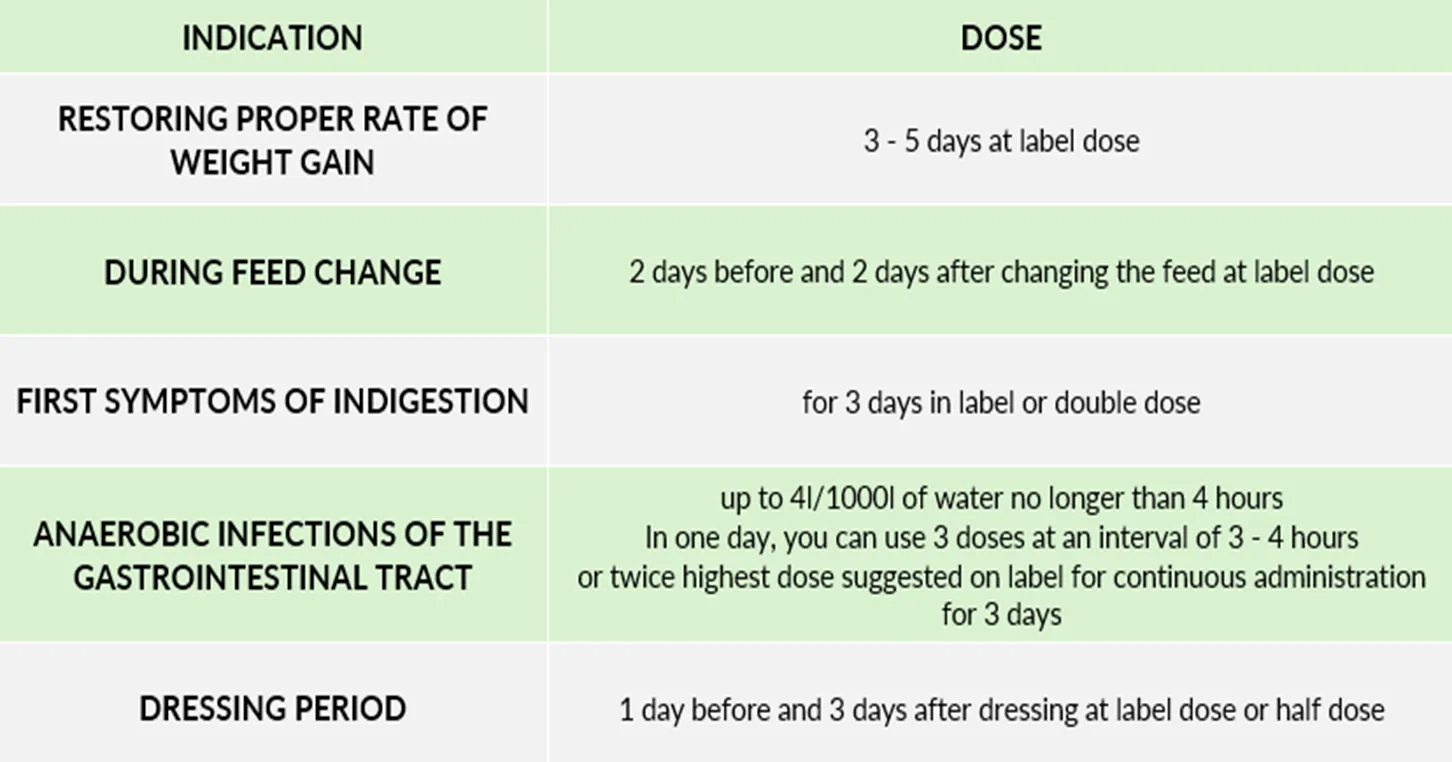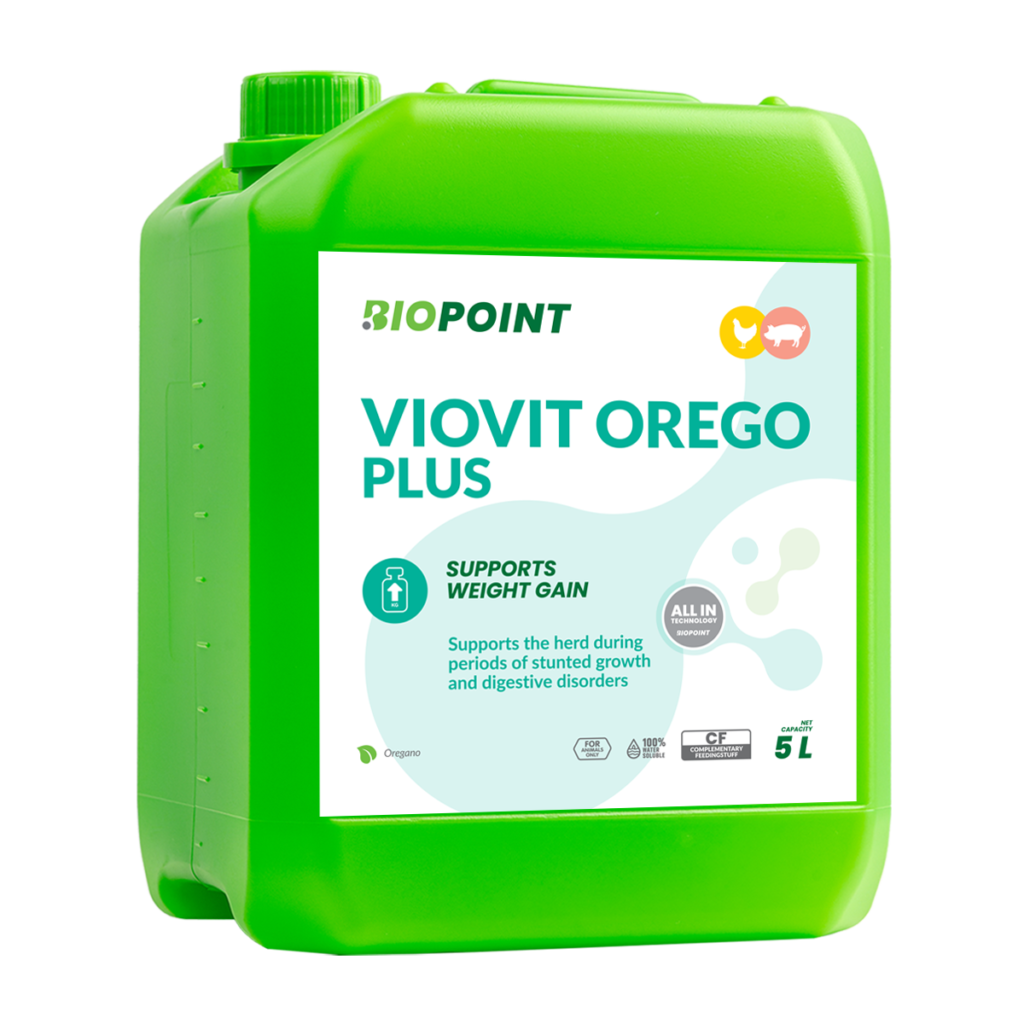Maintaining the correct environmental parameters in the digestive tract increases the chances of efficient feed utilisation, increased weight gain and a reduction in the incidence of digestive tract infections and nutritional diarrhoea. Thanks to their ability to lower the pH of the digestive tract content, acidifiers can be one of the most effective and also low-cost tools for achieving this.
Role and mechanism of action of acidifiers
The physiological pH of the digestive tract content ranges from 2.5-3.5 in the stomach to about 6.5-7.0 in the intestines, but can fluctuate adversely. Acidifiers are responsible for lowering the pH of feed, water and digestive tract content to an optimal level. Of these, a distinction is made between organic acids and their salts and inorganic acids (the most common are shown in Table 1). Organic acids are particularly recommended for use in animals, as they are much safer than most inorganic acids.
In the gastrointestinal environment, acidifiers have a beneficial effect on enzyme secretion and activity. Maintaining the correct (acidic) pH in the digestive tract allows, among other, for the correct processes of digestion and absorption of feed ingredients, minerals, vitamins, as well as maintaining the balance of the digestive tract microflora. For example, at low pH in the glandular stomach, the enzyme responsible for protein digestion - pepsin - is activated. This enzyme is produced as an inactive pepsinogen and, under the influence of H+ ions, is converted into the active enzyme pepsin. Changes in pH in the stomach can therefore result in impaired protein digestion and the formation of more harmful metabolites, reducing the acidity of the contents further down the gastrointestinal tract. This favours the multiplication of bacteria such as Clostridium spp. (anaerobic) and can ultimately lead to diarrhoea. The use of acidifiers during infections caused by anaerobic bacteria is particularly advisable due to the extremely strong effect of low pH on inhibiting the multiplication of these pathogens. On the other hand, maintaining an optimal intestinal pH has a positive effect on the number of probiotic bacteria (e.g. of the genus Lactobacillus) producing lactic acid, whose activity is closely related to the digestion of proteins, sugars and fats, the stimulation of immunity and the displacement of harmful microflora.
When to use acidifiers?
In practical applications, acidifiers are used especially when there is a risk of indigestion, weight gain disorders and infections, especially those caused by anaerobic bacteria. In order to avoid indigestion, it is recommended to use acidifiers, especially during a period of changing feed ranges or a period of feeding feed of questionable quality. This will allow for appropriate stimulation of the digestive processes and protection of the birds' digestive tract against excessive multiplication of pathogens. Acidifiers can be used throughout the breeding period, from the first days of the birds' lives. Another unquestionable advantage of using acidifiers is also the impact on the feed or drinking water itself. The presence of acids in these media limits the development of harmful microflora in silos or watering lines. This facilitates breeding, as well as the subsequent cleaning and disinfection of technical lines in the livestock facility.
How to use acidifiers?
As a preventive measure, we can use label doses to maintain optimal digestive tract condition. Acidifiers should be administered to chicks very carefully, preferably no more than 30% of the labeled dose. In birds over 2 weeks of age, in order to increase the effectiveness of acidifiers, depending on the situation, a higher dose can be safely administered in a shorter period of time (e.g. within 4-6 hours) (up to a double dose depending on the type of acidifier used). Selected recommendations for the use of acidifiers are presented in Table 2.
Can we combine acidifiers with other preparations?
We do not recommend combining with herbal preparations (extracts) and probiotics. Acidifiers should be used separately, e.g. in the second half of the daily water drunk. They can be administered together (in the same water) with preparations containing synthetic, nature-identical active substances such as thymol, carvacrol, cinnamaldehyde.
Administration during antibiotic therapy should always be consulted with a veterinarian, as, due to their chemical properties, acidifiers can significantly affect the activity and solubility of antibiotics.
To sum up, by lowering the pH of the gastrointestinal contents, acidifiers can be used as an extremely effective and inexpensive tool to maintain proper intestinal environmental conditions. They support:
- proper functioning of the digestive tract
- optimal feed utilisation and weight gain
- reduces incidence of gastrointestinal infections



